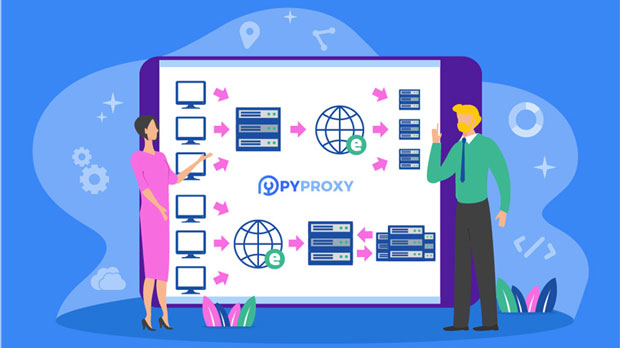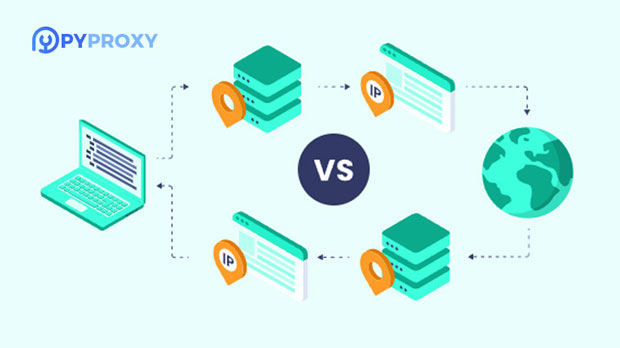Fast socks5 proxies have gained significant attention for their ability to provide high-speed, anonymous internet browsing while offering advanced functionality. With increasing concerns over privacy, security, and data protection, the demand for efficient proxies continues to rise. SOCKS5, in particular, is known for its versatility in supporting various types of internet traffic, from browsing to gaming to P2P file sharing. This article will delve into the key advantages of fast SOCKS5 proxies, along with the most common use cases for individuals and businesses looking to enhance their internet experience. Understanding Fast SOCKS5 ProxiesSOCKS5 is an advanced version of the SOCKS (Socket Secure) protocol, primarily used to route internet traffic through a third-party server. Unlike HTTP proxies, which only handle web traffic, SOCKS5 is protocol-independent, meaning it can handle a wider range of data types, including HTTP, HTTPS, FTP, and even P2P protocols like BitTorrent. What sets fast SOCKS5 proxies apart is their optimized speed, which allows users to maintain performance even when routing data through multiple servers or over long distances.While many proxies on the market are focused on anonymity, SOCKS5 stands out by offering a more reliable, faster solution for users seeking a secure and uninterrupted connection. For individuals, this can mean smoother browsing or streaming experiences, while businesses may benefit from enhanced security, improved performance, and more flexible connectivity options.Key Advantages of Fast SOCKS5 Proxies1. Speed and PerformanceThe most significant advantage of fast SOCKS5 proxies is their high-speed performance. SOCKS5 proxies are specifically designed to minimize latency and maximize throughput, making them suitable for data-heavy activities such as streaming HD video, online gaming, and downloading large files. The ability to handle high traffic loads without slowing down is a key benefit for users who rely on fast, uninterrupted internet access.For businesses that use cloud services or run remote operations, fast SOCKS5 proxies ensure smooth and efficient data transfer, even when accessing servers located in distant regions. The fast and reliable nature of SOCKS5 makes it an ideal choice for both personal and business-related activities that require stable connectivity.2. Versatility and FlexibilityUnlike traditional HTTP proxies, which only handle web traffic, SOCKS5 proxies are highly versatile. They can route any kind of internet traffic, including email, FTP, and even gaming packets. This makes them a great option for users who need to mask their IP address while engaging in a wide variety of online activities. For instance, gamers can use SOCKS5 proxies to reduce lag and improve gaming performance while protecting their online identity.Moreover, SOCKS5 proxies support both IPv4 and IPv6, providing flexibility for users looking to future-proof their connectivity. They can also be configured to work with a variety of different devices and platforms, including desktops, laptops, mobile phones, and even gaming consoles, offering a wide range of practical applications.3. Enhanced Privacy and AnonymityPrivacy is a growing concern in today’s digital world, and SOCKS5 proxies provide an additional layer of anonymity to protect users. By masking the user's real IP address, these proxies make it more difficult for websites and third parties to track browsing habits or access sensitive information. Fast SOCKS5 proxies do not log user data, offering a higher degree of privacy compared to other proxy types.For individuals concerned about online surveillance or data collection, using a fast socks5 proxy can significantly reduce the risk of being tracked, especially when browsing on public or unsecured networks. This makes them an ideal choice for users who prioritize security in environments where privacy is at risk.4. Compatibility with Various ApplicationsAnother key benefit of fast SOCKS5 proxies is their compatibility with a wide range of applications. Unlike some proxy protocols, SOCKS5 works seamlessly with a variety of software, from web browsers to P2P applications like BitTorrent, to messaging and VoIP services. This makes SOCKS5 an ideal option for users who need to route multiple types of traffic through a single proxy server.For example, users who download torrents can use a fast SOCKS5 proxy to enhance privacy and speed while sharing large files. Similarly, gamers can connect to SOCKS5 proxies to improve online gaming performance and reduce latency, while maintaining anonymity. This versatility makes SOCKS5 proxies especially useful for power users who engage in multiple online activities.Common Use Cases for Fast SOCKS5 Proxies1. Streaming and Media ConsumptionOne of the most popular use cases for fast SOCKS5 proxies is for streaming and media consumption. Many users around the world use these proxies to access geo-restricted content, such as streaming services, video libraries, and sports events. By routing internet traffic through a socks5 proxy server in a different region, users can bypass geo-blocking restrictions and enjoy content from anywhere in the world.For instance, a user in a country where a streaming service is unavailable can connect to a SOCKS5 proxy in a region where the service is accessible. The proxy masks the user's real IP address, making it appear as though they are accessing the service from a permitted location. This also improves security, as users can browse without exposing their true location or identity.2. Online GamingOnline gaming is another common use case where fast SOCKS5 proxies shine. Gamers often turn to SOCKS5 proxies to reduce latency, enhance speed, and protect their identity while playing multiplayer games. Since SOCKS5 proxies support gaming traffic without causing significant delays, they can help improve the gaming experience by ensuring a smooth, uninterrupted connection.Additionally, using a SOCKS5 proxy can protect a gamer’s IP address from being exposed, reducing the risk of DDoS attacks or other forms of cyber threats. Gamers who compete in online tournaments or engage in high-stakes gaming often rely on SOCKS5 proxies for the added layer of security and speed they provide.3. Business Security and Data ProtectionFor businesses, fast SOCKS5 proxies provide a robust solution for securing remote connections and protecting sensitive data. Whether it's accessing cloud services, maintaining private communication channels, or performing secure financial transactions, SOCKS5 proxies offer an additional layer of protection.By using SOCKS5 proxies, businesses can ensure that their corporate data is transmitted securely without exposing it to potential threats. The proxy’s ability to route traffic through different regions also allows businesses to mask their real location and IP address, adding another level of anonymity and protection from cyber attacks.ConclusionFast SOCKS5 proxies are versatile tools that provide a wide range of benefits, from improved internet speed to enhanced privacy and security. Whether for personal use, such as streaming or gaming, or for business applications, these proxies offer a reliable and efficient way to manage online traffic. Their ability to handle different types of internet traffic and maintain high-speed performance even under heavy loads makes them a top choice for users looking for a fast, secure, and anonymous browsing experience.By leveraging the power of fast SOCKS5 proxies, users can ensure a smoother online experience while maintaining privacy and security across a variety of applications. With the growing need for internet security and privacy, SOCKS5 proxies are becoming an essential tool for anyone who wants to enhance their digital experience.
Jan 03, 2025
![arrow]()



















































